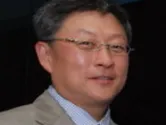Back to the future? – A shakeup in industrial solar
By William ByunMichael Graetzel of Switzerland, is announced as the winner of the 2017 Global Energy Prize for his “transcendent merits in the development of low cost and efficient solar cells”. The Global Energy Prize is the world’s leading prize for advanced energy research awarded annually and he will be honored as this year’s laureate with a nice gold medal (and the US$693,000 is a nice touch too). The announcement had all the trappings of typical of a big media release as well.
However, like many prestigious prizes though, is it only a look down a nostalgic past – or for the solar industry, is this a sign of going back… to the future?
Memory Lane
Especially in the case of this year’s award, in the solar field, Michael Graetzel is renowned as the creator of the “Graetzel cells” which revolutionized solar energy research… 20 years ago. The fall of the Berlin Wall, dial-up internet, solar PV at $9 million per solar panel MW. Looking back, it’s rather unbelievable how much development there has been in the solar energy field, much less the transformation of renewable energy overall. Global solar capacity went from less than 200 MW to over 300GW today with even more expected with commercialization of production and implementation now becoming quite commonplace. Solar is no longer a tech curiosity, it is an industrial sector.
While the field of solar energy has since boomed, it has however, moved on as well, with his direction in the Graetzel cells having been since somewhat sidetracked. Graetzel cells are dye-sensitized thin-film technologies which conceptually separate the functionality of silicon in providing the electrons and also the electric field to separate the charges and create a current, by having the dye-sensitized part provide the electrons and the semiconductor provide the transport. Practically, while such cells have had some issues due to sensitivity and stability, these are not necessarily deal-stoppers – more simply, the scaled industrial production went along the now “traditional” silicon route.
The main production industry, especially in China, has moved on along traditional silicon solar cells development and efficiency gains in their refinement. Current trends even point to conversion efficiencies approaching the respectable high teens and sufficient to engender massive production and implementation scale up to take place. China in particular, has gone down such path as the practical means to drive industry scale and it may be a sign of sector maturity that we think of silicon solar as being a respectably traditional industrial sector now.
Remembrance of things past?
Meanwhile, research and work has quietly continued along the Graetzel cell lines and efficiencies, stability and production sensitivities have also been quietly addressed and improved. In particular, the fertile nature of the Graetzel cell research field has led to a very recent surge in perovskite material based solar cells (PSCs) that have revolutionized the whole field of photovoltaics, with practical efficiencies reaching over 22% efficiency in 2016 from a start of 4% in 2009. Also, perovskite based Graetzel cells also open up a range of consumer convenience due to their flexibility and range of colors for instance in building structures, even transparent cells for use in window glasses. Like Henry Ford’s Model T, traditional silicon solar cells only came in black too – with peroskite, clear, rainbow, tutti-frutti, whatever colors and shapes may be opening up.
While “standard” solar production has been scaled in traditional silicon, the new tech startups are starting to cluster in these Graetzel-derived perovskite material thin-film technologies. As a result, China’s industrial domination of the commercial solar production sector thus far through its massive silicon factories, may soon be yet another (non-smokestack) mature industrial sector in light of this boom in perovskite tech startups. In other words, as Graetzel based perovskite cells become the hot “in” sector, the solar sector may well swing back from industrial to a tech play again. Sometimes, the look back to the past, may well be a look back to the future?









![Cross Domain [Manu + SBR + ABF + ABR + FMCG + HBR + ]](https://cmg-qa.s3.ap-southeast-1.amazonaws.com/s3fs-public/styles/exclusive_featured_article/public/2025-01/earth-3537401_1920_4.jpg.webp?itok=WaRpTJwE)
![Cross Domain [SBR + ABR]](https://cmg-qa.s3.ap-southeast-1.amazonaws.com/s3fs-public/styles/exclusive_featured_article/public/2025-01/pexels-jahoo-867092-2_1.jpg.webp?itok=o7MUL1oO)









 Advertise
Advertise


